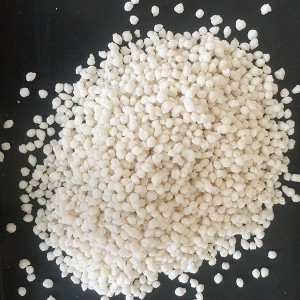Purchase monoammonium phosphate (MAP)
| Specifications | National Standard | Ours |
| Assay % ≥ | 96.0-102.0 | 99 Min |
| Phosphorus pentoxide% ≥ | / | 62.0 Min |
| Nitrogen, as N % ≥ | / | 11.8 Min |
| PH (10g/L solution) | 4.3-5.0 | 4.3-5.0 |
| Moisture% ≤ | / | 0.2 |
| Heavy metals, as Pb % ≤ | 0.001 | 0.001 Max |
| Arsenic, as As % ≤ | 0.0003 | 0.0003 Max |
| Pb % ≤ | 0.0004 | 0.0002 |
| Fluoride as F % ≤ | 0.001 | 0.001 Max |
| Water insoluble % ≤ | / | 0.01 |
| SO4 % ≤ | / | 0.01 |
| Cl % ≤ | / | 0.001 |
| Iron as Fe % ≤ | / | 0.0005 |
Introducing our high quality product Monoammonium Phosphate (MAP), a multifunctional compound with the molecular formula NH4H2PO4 and molecular weight of 115.0. This product complies with the national standard GB 25569-2010, CAS No. 7722-76-1, and is also called ammonium dihydrogen phosphate.
Monoammonium phosphate (MAP) is widely used in various industries including agriculture, food production and chemical manufacturing. As a leading supplier in the market, we are proud to offer products that meet the highest standards of quality and purity. Our MAPs are sourced from reputable manufacturers and undergo rigorous testing to ensure their efficacy and safety.
When you purchase Monoammonium Phosphate (MAP) from us, you can trust that you are receiving a reliable and consistent product. Our efficient logistics and distribution network ensures timely delivery to your doorstep with minimal disruption to your operations.
In the food industry, MAP 342(i) is used as a food additive for a variety of purposes. It is used as a leavening agent in baked goods, helping dough rise and creating a light, airy texture in the final product. In addition, it acts as a buffering agent, controlling the pH of processed foods and beverages. This is essential to maintain the stability and quality of the final product.
Additionally, MAP 342(i) is valued for its ability to enhance the nutritional content of foods. It is a source of phosphorus, an essential mineral that plays a key role in bone health and energy metabolism. By incorporating MAP 342(i) into food formulations, manufacturers can fortify their products with this important nutrient to meet the growing demand for functional foods.
1. pH Adjustment: MAP is commonly used as a pH adjuster in various foods to help maintain desired acidity or alkalinity levels.
2. Nutrient sources: Phosphorus and nitrogen are necessary nutrient sources for plant growth and development.
3. Baking agent: MAP is used as a leavening agent in baked goods to help improve the texture and volume of baked goods.
1. Overconsumption problem: Excessive intake of phosphorus from food additives such as monoammonium phosphate may lead to health problems such as kidney damage and mineral imbalances.
2. Environmental impact: If the production and use of monoammonium phosphate is not properly managed, it will cause environmental pollution.
Packing :25 kgs bag,1000 kgs,1100 kgs, 1200 kgs jumbo bag
Loading:25 kgs on pallet: 22 MT/20’FCL; Un-palletized:25MT/20’FCL
Jumbo bag :20 bags /20’FCL
Q1. What is the use of ammonium dihydrogen phosphate (MAP) 342(i)?
- MAP 342(i) is commonly used as a starter culture in baked goods and as a nutrient source in the production of yeast and bread improvers.
Q2. Is ammonium dihydrogen phosphate (MAP) 342(i) safe to eat?
- Yes, MAP 342(i) is considered safe for consumption if used in accordance with food safety regulations. It is important to follow recommended use levels to ensure the safety of the final food product.
Q3. Are there any restrictions on the use of ammonium dihydrogen phosphate (MAP) 342(i)?
- While MAP 342(i) is generally considered safe for consumption, different regions may have specific regulations for its use in certain foods. It is important to understand and comply with these regulations.





